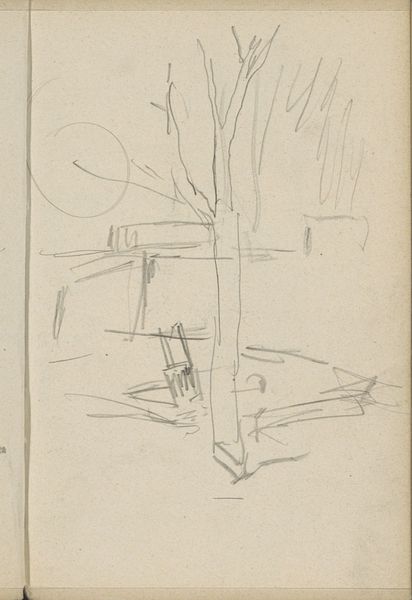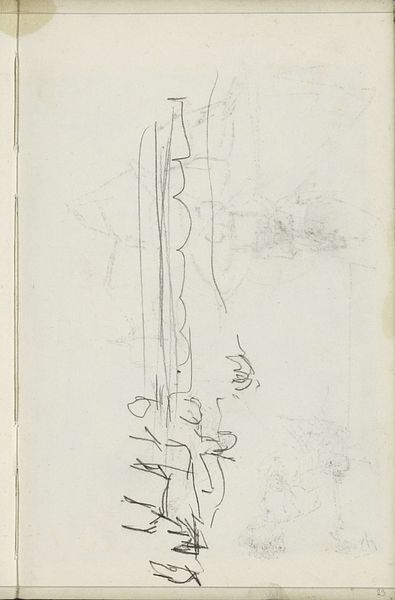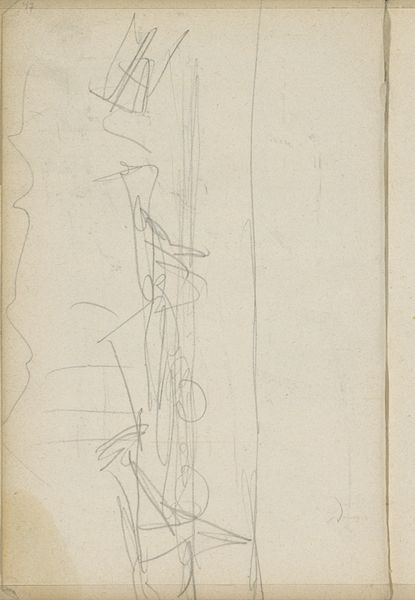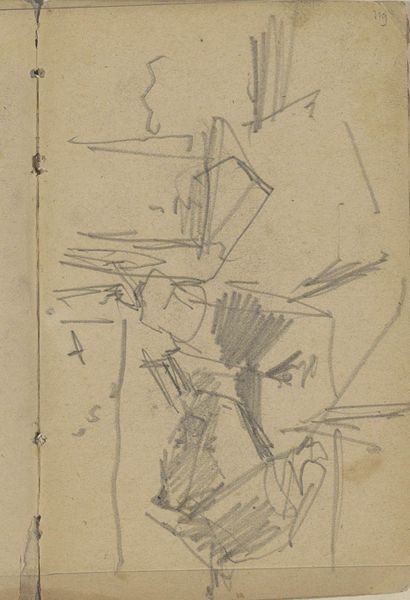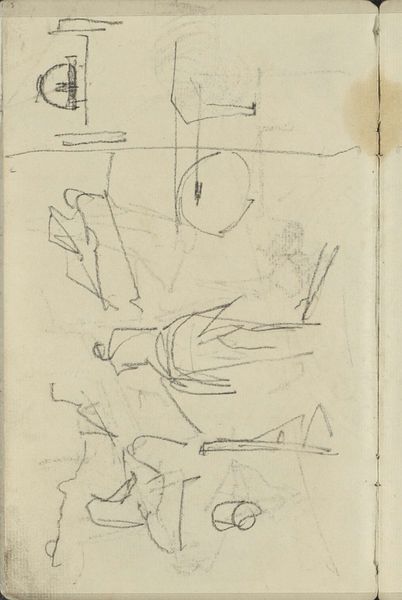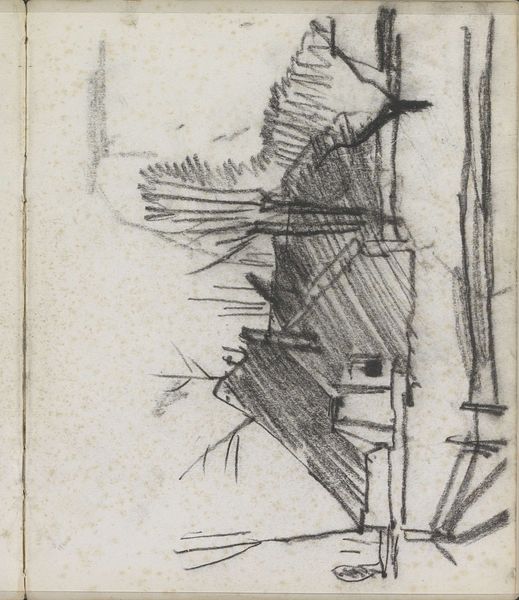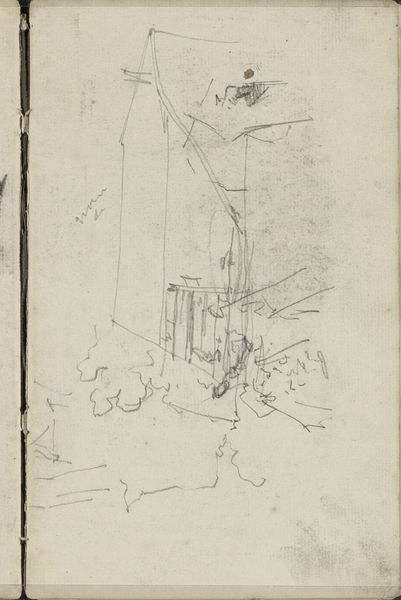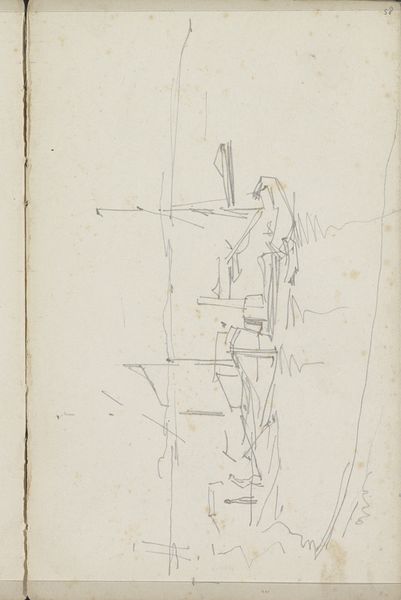
drawing, pencil
#
drawing
#
amateur sketch
#
aged paper
#
toned paper
#
quirky sketch
#
impressionism
#
sketch book
#
incomplete sketchy
#
hand drawn type
#
landscape
#
form
#
personal sketchbook
#
sketch
#
pencil
#
line
#
sketchbook drawing
#
sketchbook art
Copyright: Rijks Museum: Open Domain
Editor: So, this is "Farm in a Landscape" by George Hendrik Breitner, made between 1884 and 1886. It's a pencil drawing. I find the sketchiness of it really striking. It feels very immediate and almost vulnerable. What do you see in this piece? Curator: I see more than just a simple landscape drawing. I see a document of labor and land ownership during a time of immense social and economic change. Consider the late 19th century: industrialization, urbanization… who owns this land, and who is working it? The very act of sketching, of capturing this scene, becomes a political one. Do you notice the contrasts between the dark, assertive strokes and the lighter areas? Editor: Yes, the shading definitely creates a strong contrast, it brings out some parts. Curator: That contrast emphasizes a power dynamic. The way Breitner chooses to represent this farm, it prompts the questions: Whose perspective are we seeing, and whose stories are being left out of this representation of rural life? How does that influence our understanding of Dutch identity at that moment? Editor: I never really considered a simple drawing of a farm could be read in so many ways. So, this incomplete sketching feels intentional, making me wonder what Breitner was trying to say. Curator: Precisely. And beyond Breitner's intention, how can we, as contemporary viewers, engage with this work through a lens of critical awareness, questioning the narratives it presents and the power structures it reflects? It encourages a more thorough dialogue with our past. Editor: That is powerful. I guess that I can now read the drawing as a statement on societal progress in the Netherlands and the different groups that make it up. Thanks, that really opened my eyes.
Comments
No comments
Be the first to comment and join the conversation on the ultimate creative platform.

